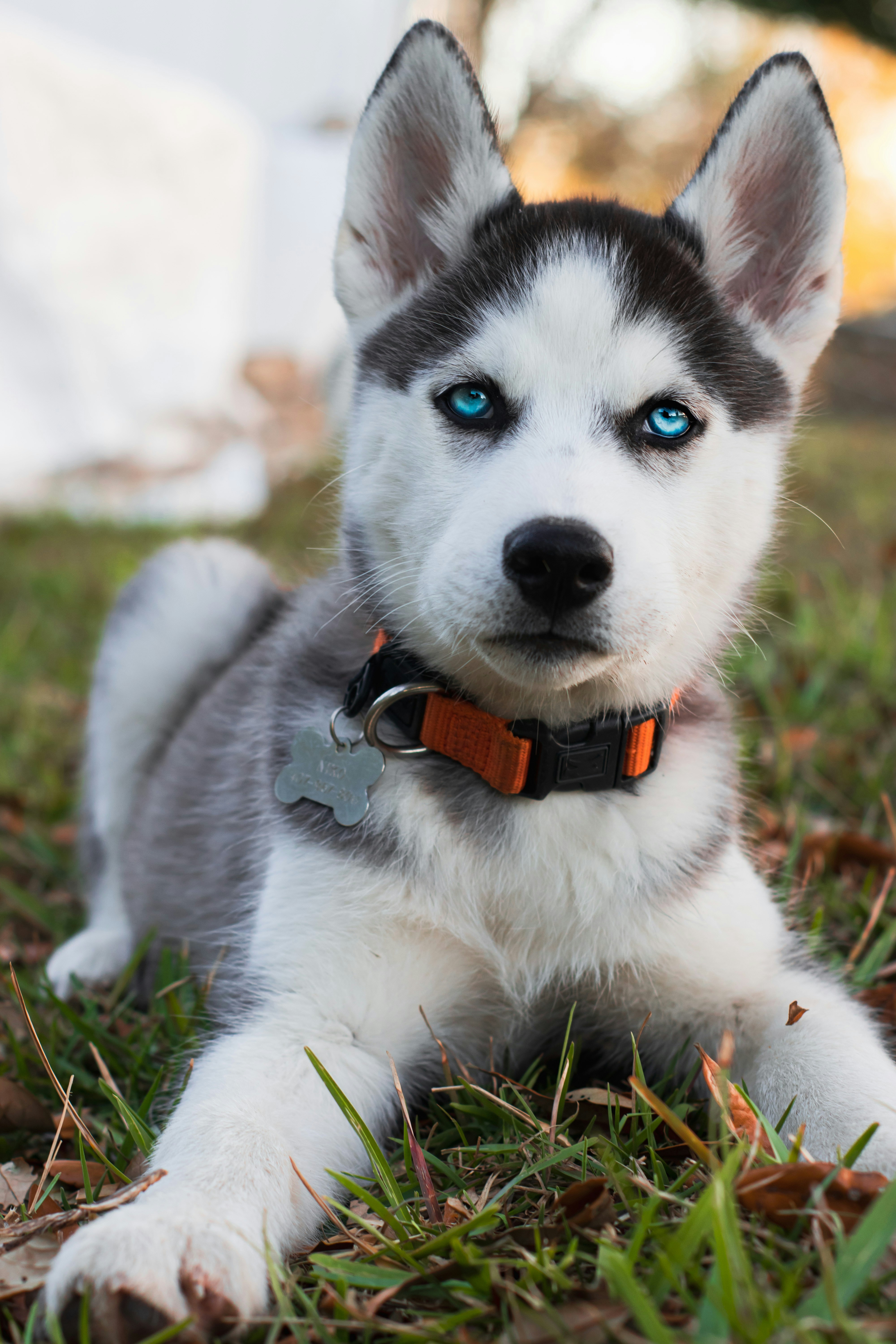
One breed that is notorious for being a poor choice for indoor living is the Siberian Husky. Known for their high energy levels and need for exercise, these dogs are not well-suited for apartment living or small homes without a yard. Siberian Huskies were bred to pull sleds over long distances in harsh Arctic conditions, and they have a strong instinct to run and roam. Without sufficient exercise and mental stimulation, Huskies can become bored and destructive, often resorting to chewing furniture or digging up the carpet.
Another breed that may struggle with indoor living is the Border Collie. These highly intelligent and active dogs were originally bred for herding livestock, and they have a natural inclination to be constantly on the move. Border Collies require a significant amount of physical and mental stimulation to prevent them from becoming bored and developing behavioral issues. Without an outlet for their energy, Border Collies may resort to destructive behaviors such as excessive barking, chewing, or even herding family members.
The Basset Hound is yet another breed that may not be well-suited for indoor living. While these dogs are known for their laid-back and easygoing nature, they have a tendency to become lazy and gain weight if not given enough exercise. Basset Hounds are prone to obesity, which can lead to a range of health issues. Additionally, their long ears and droopy eyes make them more susceptible to ear infections and eye problems, which can be exacerbated by spending too much time indoors.
It’s important to note that while these breeds may not be ideal for indoor living, it doesn’t mean they can’t be great pets in the right environment. If you have a spacious home with a large yard or live in an area with plenty of outdoor activities, these breeds may thrive. However, if you live in a small apartment or have limited space, it’s best to consider a breed that is more suited to indoor living, such as a Cavalier King Charles Spaniel or a Shih Tzu.
Ultimately, choosing the right dog breed for your home is crucial for both the well-being of the dog and your own happiness. By considering the specific needs and characteristics of different breeds, you can find a dog that will be a perfect fit for your living situation and provide you with years of joy and companionship.
1. Border Collie
Known for their high energy levels and intense herding instincts, Border Collies are not typically well-suited for apartment living. These intelligent and active dogs require plenty of mental and physical stimulation to prevent boredom and destructive behavior. Without sufficient exercise and mental stimulation, Border Collies can become anxious and develop behavioral issues.
If you live in a small space and are considering a Border Collie, it’s important to ensure that you have enough time and energy to devote to their exercise needs. Regular walks, playtime, and training sessions are essential to keep these highly intelligent dogs happy and content.
When it comes to exercise, Border Collies thrive on activities that engage their minds and bodies. They excel in various dog sports such as agility, obedience, and flyball. These activities not only provide physical exercise but also challenge their problem-solving abilities and mental agility. Additionally, Border Collies enjoy games that involve chasing and retrieving, such as playing fetch with a frisbee or a ball. These activities allow them to channel their herding instincts and burn off excess energy in a positive way.
Furthermore, mental stimulation is equally important for Border Collies. They are highly intelligent and need regular mental exercises to keep their minds sharp and prevent boredom. Puzzle toys, interactive games, and obedience training sessions are all effective ways to provide mental stimulation for these dogs. Teaching them new tricks and commands not only keeps them mentally engaged but also strengthens the bond between you and your furry friend.
It’s important to note that Border Collies are not the type of dogs that can be left alone for long periods of time. They thrive on human companionship and can become anxious or develop separation anxiety if left alone for extended periods. If you work long hours or have a busy schedule, it’s crucial to make arrangements for someone to spend time with your Border Collie or consider doggy daycare or a dog walker to ensure they get the attention and interaction they need.
In conclusion, while Border Collies may not be the best choice for apartment living, with the right amount of exercise, mental stimulation, and companionship, they can thrive in smaller spaces. Their intelligence, energy, and herding instincts make them a unique and rewarding breed for those who are willing to put in the time and effort to meet their needs.
2. Dalmatian
While Dalmatians may be known for their striking coat and unique appearance, they are not the best choice for indoor living. Originally bred as carriage dogs, Dalmatians have a lot of energy and require ample exercise to prevent boredom and destructive behavior.
Additionally, Dalmatians can be prone to separation anxiety, which can manifest in destructive behaviors such as chewing or excessive barking. Without proper exercise and mental stimulation, Dalmatians can become restless and develop behavioral issues.
If you are considering a Dalmatian as an indoor pet, it’s crucial to provide them with regular exercise, including long walks, runs, or playtime in a secure, fenced-in area. Mental stimulation through training and interactive toys can also help keep them engaged and prevent boredom.
Furthermore, it’s important to note that Dalmatians are highly social animals and thrive on human companionship. They are not well-suited for long periods of solitude and may become anxious or depressed if left alone for extended periods. Therefore, if you work long hours or have a busy lifestyle that keeps you away from home for most of the day, a Dalmatian may not be the best choice for you.
When it comes to living arrangements, Dalmatians are generally not recommended for apartment living. Their high energy levels and need for exercise make them better suited for homes with a yard or access to outdoor spaces where they can burn off their energy. Without sufficient space to roam and play, Dalmatians may become frustrated and exhibit destructive behaviors.
It’s also worth mentioning that Dalmatians have a unique coat that requires regular grooming. Their short, dense fur sheds heavily, and they are prone to allergies and skin issues. Regular brushing and occasional baths are necessary to keep their coat healthy and minimize shedding.
In conclusion, while Dalmatians are beautiful and charismatic dogs, they require a specific living environment and a dedicated owner who can meet their exercise and socialization needs. Before bringing a Dalmatian into your home, carefully consider your lifestyle, living arrangements, and ability to provide the necessary care and attention they require.
3. Siberian Husky
Siberian Huskies are beautiful and majestic dogs, but they are not well-suited for indoor living, especially in warmer climates. Originally bred to pull sleds over long distances, Huskies have a strong instinct to run and explore. They have a thick double coat that helps them withstand cold temperatures, but it can make them prone to overheating in warmer climates.
In addition to their exercise needs, Huskies are known for their independent and stubborn nature. They require consistent training and a firm, confident owner who can establish boundaries and provide them with structure. Without proper exercise and mental stimulation, Huskies can become bored and engage in destructive behaviors.
If you live in a small space or in a warmer climate, it’s best to consider a different breed that is more suitable for indoor living.
However, if you have the right environment and lifestyle to accommodate a Siberian Husky, they can make incredible companions. Their striking appearance, with their piercing blue or multicolored eyes and thick, fluffy coats, often captures the attention of onlookers. But there is more to this breed than just their physical beauty.
Huskies are known for their friendly and outgoing personalities. They are generally good-natured and get along well with people, including children. They are also typically sociable with other dogs, making them a great choice for households with multiple pets.
One of the most appealing traits of a Husky is their intelligence. They are highly trainable and excel in activities that challenge their minds. This makes them a popular choice for dog sports such as agility, obedience, and even sledding competitions.
However, it is important to note that Huskies can be quite mischievous if they are not given enough mental and physical stimulation. They have a natural inclination to explore and can be escape artists if they feel confined or bored. This means that a securely fenced yard and plenty of exercise are essential for their well-being.
Another consideration when owning a Husky is their vocal nature. They are known for their howling and can be quite vocal when they want attention or are trying to communicate something. This can be endearing to some, but it can also be a challenge for those who prefer a quieter living environment.
In conclusion, Siberian Huskies are not suitable for everyone, but for those who are willing to meet their unique needs, they can be incredibly rewarding pets. With the right training, exercise, and mental stimulation, a Husky can bring joy and excitement to your life for many years to come.
4. Jack Russell Terrier
Jack Russell Terriers are small in size but big in energy. These intelligent and active dogs require plenty of exercise and mental stimulation to prevent boredom and destructive behavior.
Without proper outlets for their energy, Jack Russell Terriers can become restless and engage in behaviors such as excessive barking, digging, or chewing. They are also known for their strong prey drive, which can make them prone to chasing small animals or even cars.
If you live in an apartment or have limited space, it may be challenging to provide a Jack Russell Terrier with the exercise and mental stimulation they need. However, if you are an active person who enjoys outdoor activities and can commit to providing them with regular exercise, a Jack Russell Terrier can make a great companion.
When it comes to exercise, Jack Russell Terriers are not the type of dog that can be satisfied with a short walk around the block. They require at least an hour of vigorous exercise every day to burn off their excess energy. This can include activities such as running, playing fetch, or participating in agility training.
In addition to physical exercise, Jack Russell Terriers also need mental stimulation to keep their minds sharp. They are highly intelligent dogs that thrive on learning and problem-solving. Providing them with puzzle toys, interactive games, and obedience training can help keep their minds engaged and prevent boredom.
It’s important to note that Jack Russell Terriers are not recommended for first-time dog owners or families with young children. Their high energy levels and strong prey drive can make them difficult to handle, especially for those who are inexperienced with this breed. They need an owner who can provide firm and consistent leadership, as well as set clear boundaries and rules.
Despite their challenging nature, Jack Russell Terriers are incredibly loyal and affectionate towards their owners. They form strong bonds with their families and are always eager to please. With the right training and socialization, they can get along well with other dogs and pets.
In conclusion, if you are an active individual or family who can meet the exercise and mental stimulation needs of a Jack Russell Terrier, you will be rewarded with a loving and energetic companion. Just be prepared for a dog that will keep you on your toes and provide you with endless entertainment and adventure.
5. Basset Hound
Basset Hounds are known for their long ears and droopy eyes, but they are not the most suitable breed for indoor living. These scent hounds were originally bred for hunting, and they have a strong instinct to follow their nose.
Without proper exercise and mental stimulation, Basset Hounds can become bored and engage in destructive behaviors. They are also prone to obesity, so it’s important to monitor their diet and ensure they get enough exercise to maintain a healthy weight.
If you live in a small space, it may be challenging to provide a Basset Hound with the exercise they need. However, if you have access to a secure, fenced-in area where they can safely explore and follow their nose, a Basset Hound can make a loving and loyal indoor companion.
Basset Hounds thrive in environments where they have ample space to roam and explore. They have an incredible sense of smell and will happily spend hours sniffing out scents and tracking trails. This breed is not suited for apartment living or confined spaces, as they require room to stretch their legs and follow their instincts.
When it comes to exercise, Basset Hounds need a moderate amount of daily activity to keep them happy and healthy. A daily walk or two, along with some playtime in a secure yard, will help fulfill their exercise needs. It’s important to note that Basset Hounds should always be kept on a leash or in a securely fenced area, as their strong scent drive can lead them to wander off if they catch an interesting scent.
In addition to physical exercise, Basset Hounds also require mental stimulation to prevent boredom. Puzzle toys, scent games, and obedience training can all provide mental challenges for this intelligent breed. They enjoy using their noses to search for treats or toys, so activities that tap into their natural instincts will keep them engaged and prevent destructive behaviors.
When it comes to living indoors, Basset Hounds are generally calm and well-behaved. They are known for their friendly and easygoing nature, making them suitable companions for families and individuals alike. However, it’s important to note that Basset Hounds can be prone to separation anxiety if left alone for long periods. They thrive on human companionship and may become anxious or destructive if left alone for extended periods.
Overall, while Basset Hounds may not be the best breed for indoor living in small spaces, they can still make wonderful companions if provided with the proper exercise, mental stimulation, and companionship. With their unique appearance and lovable personality, Basset Hounds can bring joy and laughter to any home that can accommodate their needs.











